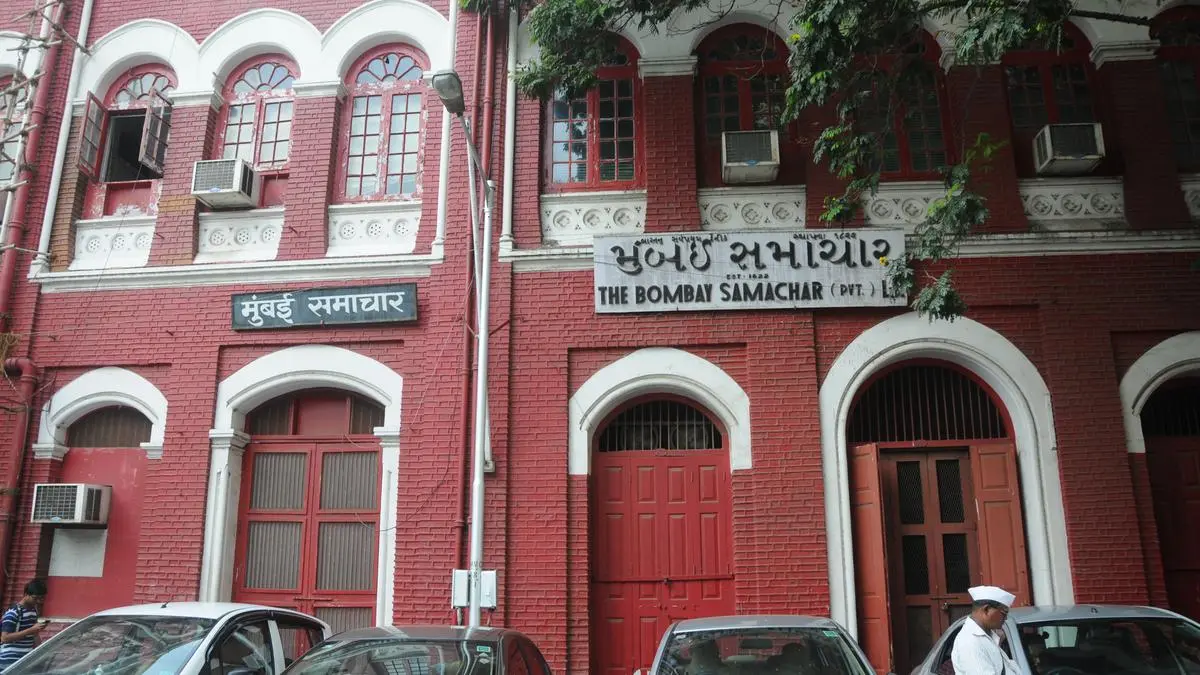The oldest active newspaper in Asia, ‘Mumbai Samachar’, which published reports on the First Independence War of India in 1857, the death of the legendary Rani Laxmibai or Jhansi and the birth of Congress, is changing a new page on it.
Established in 1822 by Fardunji Marzban, a scholar of Parsi, the newspaper’s management has launched a new project to digitize and document the rich legacy of Gujarati Daily.
Located in a colonial era building in the prominent area of Horniman Circle in Mumbai, the newspaper has resisted many storms during its 203 -year history, including a subscription fall and readers after the advent of the Internet, news applications and expansion of social networks, but continues its trip.
” We are in conversations with different agencies to restore old archives in our files, which is a national legacy. Similarly, we want to create a website whose content is approximately 10,000 stories published in the newspaper in the last 200 years, ” the Mumbai Editor Samachar, Niles Dave, told PTI.
“From 1932 to 1947, we have old copies of the newspaper. Even until 1857, there are some copies in our files. But they can open since they are not in good condition,” he said.
Dave said the newspaper recently launched its English website and will soon have Marathi and Hindi.
“My documentary, Mumbai Samachar 200 did not, will be screened at the Cannes Film Festival, which will be held from May 15 to 20. Prime Minister Narendra Modi launched his trailer, while the documentary was launched by the Minister of Interior of the Union, Amit Shah in Mumbai (in September 2024).”
Started as “ Shri Mumbai Na Samachar ” by the scholar of Parsi Marzban, the newspaper served mainly as a source of information for merchants, most of them Parsis and Marwaris, and details about goods in the port of Bombay.
Founder Marzban came from Surarat and was always interested in the printing business. When he arrived in Mumbai, a book of union to books began.
He obtained 150 subscribers and offered them a copy of the newspaper for RS 2 per month. Besids that disseminate information about ships to merchants, free death notes such as community service were published, and later, news reports were also printed.
The newspaper began to obtain advertising income from merchants who wanted to send their products by ships to other places. There were also dramas ads. Since 1841, they have two marathi editors of the newspaper’s leg: Janardhan Vasudev and then Vinayak Vasudev.
Initially, merchants were a news source published in the newspaper, including the information related to Peshwas, Tatya Tope and the death of Rani Laxmibai or Jhansi Duration the 1857 Levanting. The newspaper began as a weekly publication, then became biweekly and became a newspaper in 1832. He had news written by hand and then printed on a machine brought, especially in London.
When Bombay was grinding to Mumbai (in 1995), former Minister Chagan Bhujbal showed a copy of Mumbai Samachar in the Maharashtra legislature to emphasize that the name of the city was always Mumbai. However, the editorial name was Bombay Samachar Pvt Ltd.
Editor Dave said that Mumbai Samachar was the only duration of newspaper not affected by the emergency of 1975-77 when the press faced censorship.
“We publish both the opposition and the news of the government and we were neutral. Our owner, Mr. Cama (Hormusji bed), told the then Prime Minister Indira Gandhi that if all the doors for dialogue are closed, there can be no solution. We do not publish any news under pressure. We only have an edition, which is available throughout the country,” he said.
Posted on April 27, 2025

